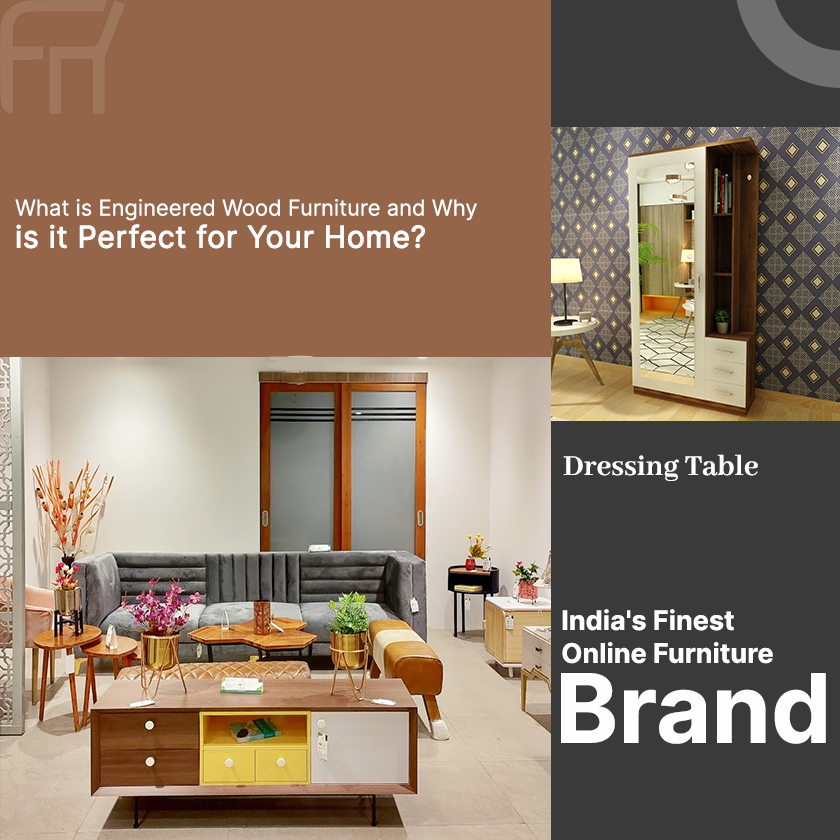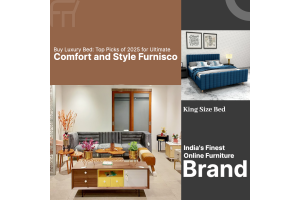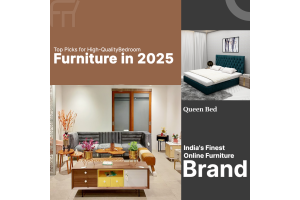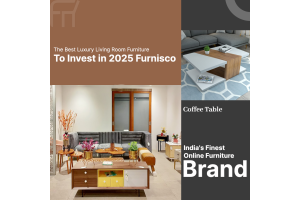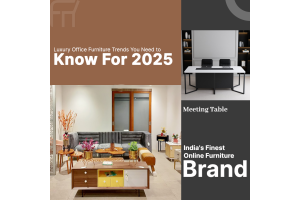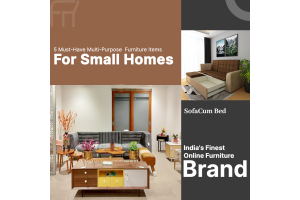What is Engineered Wood Furniture and Why is it Perfect for Your Home?
Over the last several years, this newly engineered wood has captured a lot of attention in furniture designing. This perfectly sounds for a number of homeowners as it becomes a combination of elegance and eco-friendliness. While they are opting for what they feel is beautiful furniture, at the same time, they are on the lookout for one that is eco-friendly. Then, engineered wood fits the bill as far as material selection is concerned. Made from layering with wood fibers or any other material bonded together to form a solid and flexible product that can be adapted to different designs.
Selecting proper furniture material is a key factor in how a space looks and feels. It relies on the influence it has on the design overall, the strength of the items, and the related costs as well. People often look for strong-, cost-, and well-looking materials when choosing furniture. Engineered wood fulfills all.
Let's go into the essence of engineered wood and find out how it might just be the right material for your home furniture.
What is Engineered Wood?
Engineered wood is a wood product created through a manufacturing process that consists of the assembly of various wood components such as strands, particles, fibers or veneers. This man-made wood product is treated and pressed to strengthen its stability. Unlike natural wood, sourced directly from trees, manufactured wood is produced in many other ways. This enables wood manufacturers to come up with products with benefits that solid wood would lack.
Definition and Manufacturing Process
The main processes for producing engineered wood are meant to be able to infuse such properties into the material as density and moisture resistance. It is proved using anything from sawdust to waste wood particles, which can all be chipped into small pieces, and these chips combined are strongly glued together and compressed to make large sheets or panels. This is the way that it utilizes otherwise wasted material to form wood to meet the most stringent specifications in application.
How it Differs from Natural Wood?
With respect to natural wood, engineered wood is significantly different in consistency and strength, among other parameters. Natural wood, although it is attractive, tends to warp, crack, or fade over time, especially when subjected to temperature and humidity changes. Engineered wood is otherwise designed and manufactured to prevent such failures. Rather, controlled manufacturing processes allow this wood to keep its shape and appearance with the passing of time. Thus, it is a reliable choice for structural or aesthetic purposes.
As a result, engineered wood is quite simply a material supplemented by process so that wood shows better properties. Its recycling of wood waste and advanced engineering techniques found this more stable and reliable material compared to natural wood, thus overcoming many limitations of the traditional timber material.
Types of Engineered Wood
Once you begin conversing about engineered wood, you start to find out the several different types that are each designed for a different use.
MDF (Medium-Density Fiberboard)
MDF is known as the extremely smooth medium density fiberboard which makes it good for painting jobs with cleaner and crisper lines. It is made by binding wood fiber through resin. MDF becomes a strong material to shape. It is highly favored in the intricate designs of furniture as well as in cabinetry and decorative applications where the worldwide premium polished appearance is demanded.
HDF (High-Density Fiberboard)
Whereas HDF, or High-Density Fiberboard, is also prepared like MDF yet substantially denser and heavier. Due to the increased weight, this enhances the durability of this product, which ideally looks good for flooring and tough pieces of furniture. HDF is usually also found in places that experience high traffic because this fiberboard can withstand a lot of damage and still maintain the look.
Particle Board
The type of engineered wood that compresses small chips of wood together is called a particle board. Due to the fact that it is not too costly, particle boards are used properly for low-budget furniture making it economical to a lot of consumers. But it has its own disadvantages. Compared to most engineered wood, it typically is not as strong, so it does not hold up nearly as well under load or in tougher conditions.
Blockboard
The blockboard is a novel method of construction. It has a core made of thin strips of wood and provides excellent strength. It is the most frequently used engineered wood in building robust articles-such as doors, tabletops, and shelving. Blockboard offers a very good solution for applications where strength is concerned, giving long-lasting strength to furniture and other structures.
Veneered Engineered Wood
Finally, veneered engineered wood is the union of function and form. It consists of a thin layer of natural wood veneer on base material. So the elegance of real wood comes with affordability. Such products allow homeowners and designers to enjoy ends without that cost factor_-style makes furniture available.
Every type of engineered wood has its own individual functions and a unique advantage that makes them usable and suitable for many applications at various budgets. Knowing the fundamental difference helps in choosing the best one ideal to your needs.
Applications of Engineered Wood Furniture in Home
Engineered wood is incredibly versatile and can be found in a variety of home furniture applications.
Wardrobes
Engineered wood, owing mainly to its flexibility, plays quite a significant role among many other types of home furniture. They are the most widely used in the form of wardrobes. These wardrobes are designed to showcase modern styles and finishes. They are not just attractive; they are also built to last, providing the strength and durability needed for everyday use.
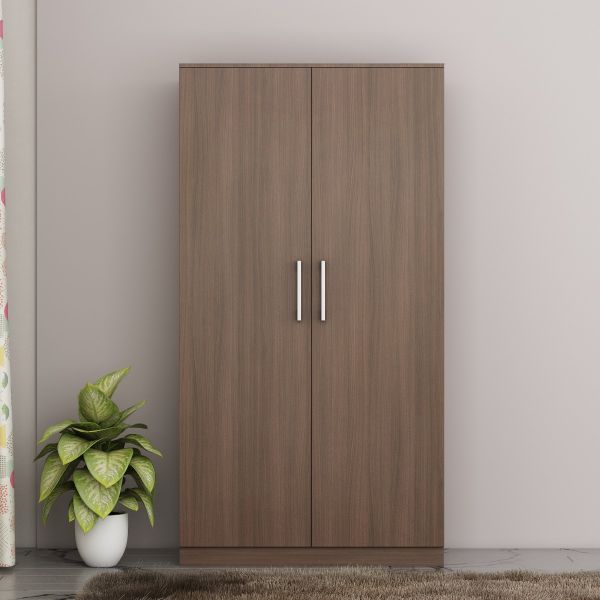

Cabinets
In addition to wardrobes, engineered wood is commonly used in cabinets throughout the home. Whether it's for the kitchen or the bathroom, these cabinets can be tailored to fit specific dimensions and personal tastes. Homeowners appreciate the customization options that allow them to create storage solutions that suit their lifestyles.
Dining Tables
Combinations of an engineered wood dining tables are ideal since they are modern with elegant practicalities. They are typically very long and would require a large space for dining activities while at the same time add grandeur to a room environment. Such designs are abundantly available; therefore, every household can easily find that which best fits their decor.
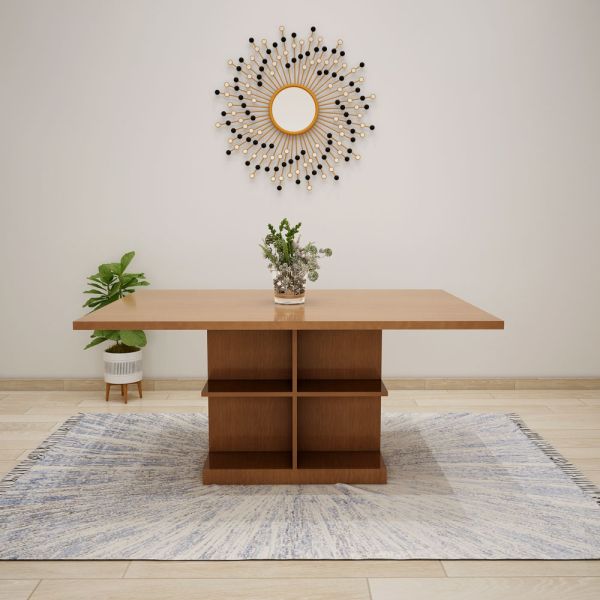

TV Units
TV units are another key application of engineered wood. These units not only enhance the room's look but also offer a practical way to organize media devices and accessories. They come in many styles, making it easy to find one that complements your existing furniture.
You can find many beautiful and functional pieces made from engineered wood that blend seamlessly into your home décor, offering a stylish touch without breaking the bank.
Which is the Best Engineered Wood?
Choosing the best type of engineered wood requires careful comparison of the options available in the market. There are several types of engineered wood, each with its unique features, strengths, and weaknesses.
Comparison of Different Types
- Durability: First, let's look at durability. Medium Density Fiberboard (MDF) and High-Density Fiberboard (HDF) are often more durable than particle boards. They withstand wear and tear better, making them suitable for furniture that sees heavy use. On the other hand, particle boards, while affordable, may not last as long under constant stress.
- Cost: Next is cost. Particle board is generally the most budget-friendly option. It is widely available and offers a good solution for those looking to furnish a space economically. Blockboard, while sturdy, typically falls on the higher end of the pricing spectrum. It requires a larger budget for those considering its use in projects.
- Aesthetic Appeal: Aesthetic appeal is another important factor. Veneered engineered wood provides a nice balance between attractiveness and cost. The outer veneer can mimic the look of solid wood while keeping expenses lower. This option is popular among those who desire stylish furniture without stretching their budget too far.
Factors to Consider
When deciding which type of engineered wood to choose, consider several factors. The first is placement. Different types of engineered wood are suited for various environments. Think about where the furniture will be used, such as in a high-traffic area or a quiet corner.
Budget also plays a critical role. It’s essential to determine how much you are willing to spend. Understanding your financial parameters can help narrow down your choices quickly.
Lastly, think about wear and tear. If the furniture will be subject to a lot of daily use, selecting a more durable option will pay off in the long run. By evaluating these factors, you can make an informed decision when choosing the best engineered wood for your needs.
Why Engineered Wood Furniture is Perfect for Your Home
Engineered wood furniture is the modern favorite choice among houses today and for so many good reasons. Style, convenience, and the cost-effective combination-the advantages of engineered wood furniture over erstwhile solid wood furniture are limitless. Here are some reasons why engineered wood furniture is the appropriate complement for your home:
1. Affordability for High-End Luxuries
Look at the high-priced quality of wooden furniture that engineered wood has for you without there being a haughty price. It becomes economical for every homeowner who wishes to give his home stylish but functional furniture without straining the budget.
2. The Allrounder-Define-Design
Thanks to its flexibility during manufacture, engineered wood can be put into various designs, everything from sleek modern styles to those of classical aesthetics. Its smooth surface also allows the simple application of veneers, laminates, or paints, making it suitable for almost any surrounding theme applied to it.
3. Tenacity and Toughness
Unlike solid woods, engineered woods are made to prevent warping, cracking, or shrinking. For this reason, such furniture would find the best place in places where there are erratic temperature and humidity conditions in the house, such as kitchens and bathrooms.
4. Environment-Friendly Choice
Wood wastes and by-products not cutting down trees into making engineered furniture utilization. This is a great material; through it, you are practicing sustainability and minimizing environmental impacts.
5. Safe on Weight and Easy to Handle
Furniture made from engineered wood is lighter when compared to that of solid wood, hence handling and shifting from one place to another is much easier at home. For that single person living and moving apartments, this convenience is lifesaving.
6. Resistance to Termites
Most types of engineered wood are termite resistant, so you grant them peace of mind by increasing the lifetime of your furniture.
7. Low Maintenance
Engineered wood furniture requires hardly any cleaning and can easily be wiped with a moist cloth to keep it looking new-as great for busy households.
With all its benefits of affordability, durability, and style, engineered wood furniture is perhaps the best option for anyone wishing to modernize, beautify, and furnish in an eco-friendly way.
Tips to Take Care of Engineered Wood Furniture
To guarantee that your engineered wood furniture remains in excellent condition for many years, it is essential to follow a few straightforward maintenance tips. These practices will help maintain both the appearance and durability of your furniture.
Best Practices for Cleaning and Maintenance
- Use a soft cloth for dusting.
- For deeper cleaning, a damp cloth with mild soap can be effective. Just be sure to dry the surface afterward.
Do’s and Don’ts
- Do: Use coasters to protect surfaces.
- Don’t: Avoid placing hot items directly on the surface, as this can damage the finish.
Click to Watch the video for expert tips on cleaning and maintaining your engineered wood furniture!
Conclusion
Furniture made from engineered wood is very good because it can be very practical and stylish at the same time. It offers an appealing option for all those who want an elegant and eco-friendly home. Engineered wood is so affordable to everyone that most of them can afford to have an attractive and improved living area without slicing their pockets dry. Such furniture is also known to be quite versatile and not limited by budget constraints. It fits even in a modern design, as traditional homes can also find perfect pieces for matching their decor.
Additionally, engineered wood is made from sustainable resources. This helps reduce deforestation and minimize waste, contributing to a healthier planet. By choosing engineered wood, you are making a choice that is better for the environment while still enjoying high-quality products.
For anyone who seeks to balance aesthetic appeal with sustainability, exploring the options at Furnisco is a wise decision. They offer a variety of elegant and stylish pieces that can suit any home and lifestyle. You might discover just the right items to enhance your space and reflect your values while enjoying the benefits of engineered wood furniture.





















